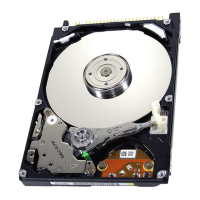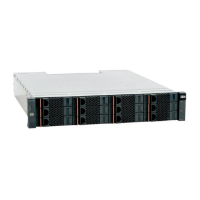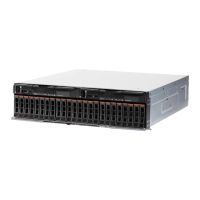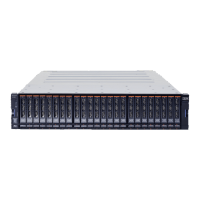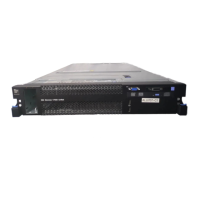9.6.2.1 Random vibration
The test consists of a random vibration applied for each of three mutually perpendicular axes with the
time duration of 10 minutes per axis. The PSD levels for the test simulate the shipping and relocation
environment shown in the following table. (IBM STD C-H 1-9711-005)
0.0010.010.010.0030.030.030.001
G
2
/Hz
200705540842
Frequency (Hz)
Note: The overall RMS level of vibration is 1.04 G RMS.
Figure 54. Random vibration PSD profile break points—nonoperating
9.6.2.2 Swept sine vibration
y
2 G (0–peak), 5–500–5 Hz sine wave
y
0.5 oct/min sweep rate
y
3 minutes dwell at two major resonances
9.6.3 Operating shock
The hard disk drive meets IBM Standard C-S 1-9711-007 for the S5 product classification.
The drive meets the following criteria while operating in respective conditions described in the following
bullet list. The shock test consists of ten shocks inputs in each axis and in each direction for a total of 60.
There must be a delay between shock pulses that is long enough to allow the drive to complete all of the
necessary error recovery procedure.
y
No error occurs with a 10 G half-sine shock pulse of 11 ms duration in all models.
y
No data loss occurs with a 30 G half-sine shock pulse of 4 ms duration in all models.
y
No data loss occurs with a 55 G half-sine shock pulse of 2 ms duration in all models.
9.6.4 Nonoperating shock
The drive will operate with no degradation of performance after being subjected to a shock pulses with
the following characteristics
.
9.6.4.1 Trapezoidal shock wave
y
Approximately square (trapezoidal) pulse shape.
y
Approximate rise and fall time of pulse = 1 ms.
y
Average acceleration level = 50 G. (Average response curve value during the time following the 1 ms
rise time and before the 1 ms fall with a time "duration of 11 ms")
y
Minimum velocity change = 4.23 m/s
Deskstar 60 GXP Hard disk drive specification
55

